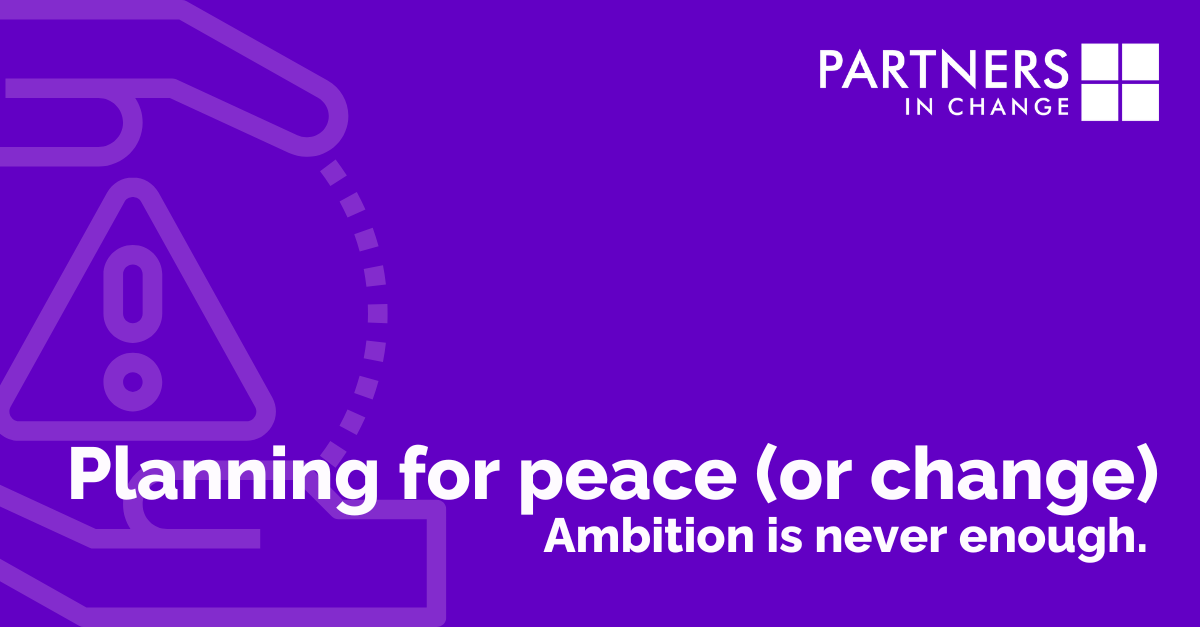Planning for Peace (or delivering change): ambition is never enough
By Dave Jepson — November 6, 2025

Why ambition is never enough
Many change endeavours fail, not because of lack of intent or energy. In fact, rescue organisations around the world will attest to the fact that much failure is consequent to energy and enthusiasm triumphing over preparation and control. Coroners call it ‘misadventure’. The path to the metaphorical summit is littered with ailing and broken bodies. Ambition is great, but it needs to be in line with capability, and simply imagining an outcome and setting off is not enough, whether you’re climbing an earthly mountain or a commercial one. Why do we so often fall short of ambition?
I have recently completed a review of a major change programme, focussed on whether benefits were realised or not, and I’ve been struck by parallels with global geopolitical challenges, specifically in planning for peace in Ukraine and Gaza.
My client delivered a large chunk of what they hoped for if weighing rather than counting outcomes, but much was not realised. They might have settled for what they got – no harm was done, apart from erosion of trust and goodwill both of which might impact future change initiatives.
What was clear was that they lacked understanding of the drivers, and clarity on the end-state detail – giving an ability to measure (and therefore track and report) whether benefits had been achieved.
Most importantly they lost sight of management of the change journey – they had achieved some tasks but not taken people (hearts and minds) with them. This undermines goodwill for both new BAU, but also increases nervousness about future change.
In Gaza, and in Ukraine, the desire for peace is laudable, but are all the key stakeholders invested? And are the key players engaged? Imposing an outcome is like imagining someone on top of Everest. Do they want to climb; can they climb; are they fit enough; do they even want to go there anyway?
I’d argue orange-hued success has been declared far too soon, certainly if one listens to the views of those immediately impacted. If you want to achieve outcomes there are eight essential things to do at the start.
1 – Be clear on why those outcomes matter – not just to you, but to the organisation and the key impacted and involved groups. In this instance, trying to earn yourself a Nobel peace prize is, arguably, a little self-serving!
2 – Have a clear end-state, but make sure that has been built with key target individuals who have to bring that end-state to life, and then live in it and sustain it. Would turkeys vote for Christmas?
3 – Organise to deliver: have the right talent, tools and ‘fitness’. I may be used to hiking, but buying carabiners, ropes, and climbing shoes doesn’t turn me into a sheer-face mountaineer. Change is different to BAU.
4 – Plan: what are you going to do, and when? Make sure the steps are sufficient to get you to the outcome; make sure they’re at a pace you can manage; make sure they’re sequenced logically. If you’ve never seen a map of Hilary’s first climb of Everest I commend to you a quick search. We imagine a line that goes straight up: it doesn’t.
5 – Plan: the change journey. What will it feel like for those people travelling from now to their new future? What will they need to both make the journey, then survive and thrive in the new world?
6 – Control: as you go, monitor, report and review. Are you on track? Are their new hazards? Can you speed up? Should you slow down? What do you need to do to keep everyone nourished, focussed and committed on getting to the destination?
7 – Lead well. You cannot lead a long march from without, particularly a hazardous one. You need to be inside, part of it, and (related to the organisation point) – you need a good committed and aligned team around you.
8 – Plan for reinforcement. When you get to the destination your job is not done: at best you’re half way. What needs to be in place so that your end-state will endure and evolve, bringing the benefits that you originally hoped for? Whether your goal is world peace, or increased organisational performance, imagining a better world isn’t enough, you can’t impose a solution that is likely to stick without involving all the key interested parties, and you can’t lead remotely.
If you’re planning on major change and want to know whether you’re set up for success, get in touch. We have a simple diagnostic that will help you avoid the pitfalls that have caused many an ambitious change to collapse catastrophically.



Recent Posts